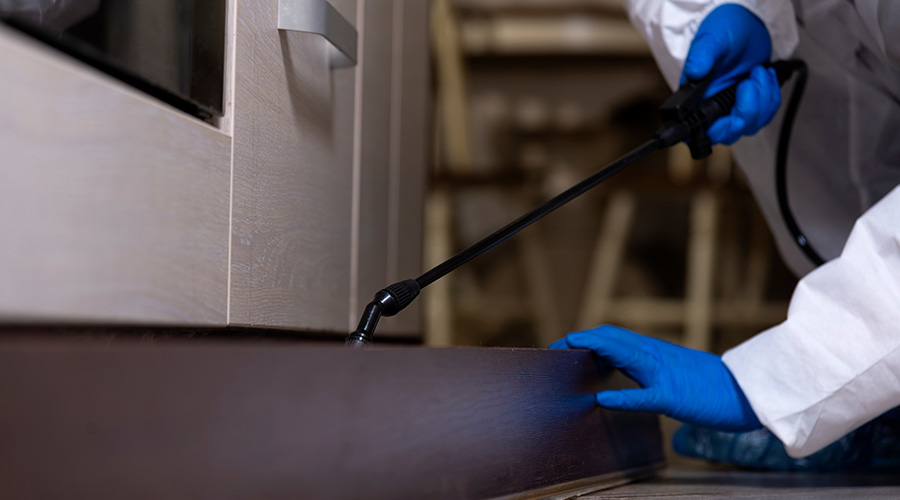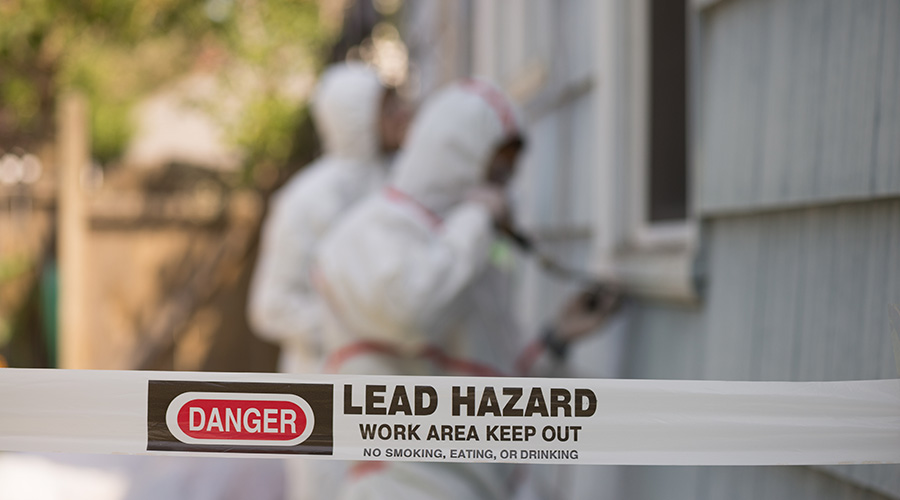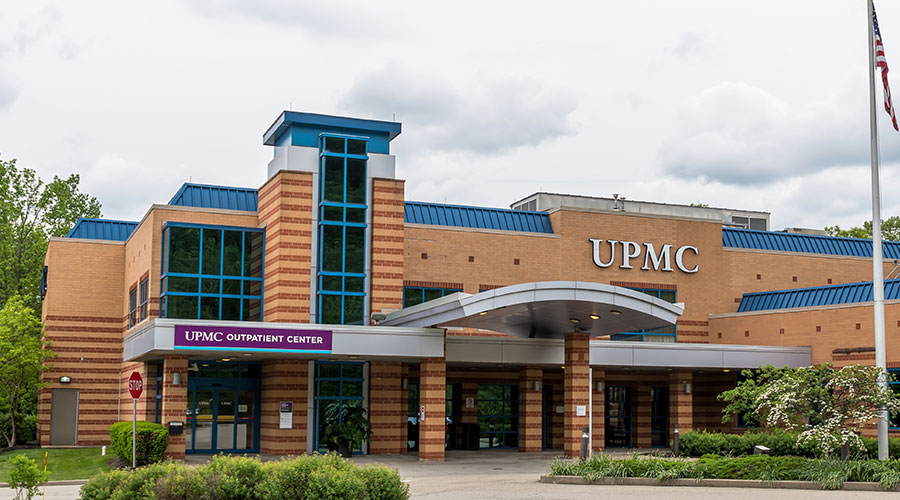Transforming the Presidio
Renovating the sprawling ARMY BASE into a mixed-used national park means balancing technology, history, the environment and MAINTAINABILITY
All organizations strive to achieve important goals, such as energy efficiency, within the limits of their facilities. Maintenance and engineering managers in a range of existing buildings often find themselves challenged to reach such goals within buildings that are old, poorly maintained, underfunded, unsuited to cost-effective renovations, or all of the above.
But few organizations have undertaken this challenge on such a large scale and across a wider range of building types than the operations department at the Presidio Trust in San Francisco. The department’s efforts to blend history, technology, the environment and maintainability offers a case study in balancing demanding priorities.
A Sprawling Challenge
“This is more or less like running a town or a small city,” says Stephen Potts, the Presidio Trust’s director of operations. “We have to be able to respond to almost any kind of problem ourselves.”
The Presidio, a 1,491-acre park located between San Francisco Bay and the Pacific Ocean, features more than 790 buildings for both residential and non-residential use. About 470 of the buildings have been designated as historic landmarks. The facility types span numerous decades of architectural types, and they range from elegant officers’ quarters and barracks to large warehouses, administrative headquarters, air hangars, major medical facilities and stables.
Founded in 1776 as a Spanish military installation and later operated by both the Mexican army and the U.S. army, the complex became a national park in 1972. In 1994, management transferred to the National Park Service, which oversees the park in conjunction with the Presidio Trust. The trust manages all building leasing, grounds and public works services and building restoration.
A primary task of the department of operations is upgrading and renovating the Presidio’s many structures to make them work for both commercial and residential uses. The Presidio currently has about 900 occupied residences.
“We really have to step back in time with these historic structures,” Potts says. “We have to pay attention to issues such as reuse, but we have to modernize everything, including the fixtures and the utilities.”
Balancing all of these competing considerations is a tough act, especially given the code restrictions. Under the National Historic Preservation Act, all buildings contributing to a national historic landmark must be preserved and rehabilitated according to National Park Service Policy and the U.S. Secretary of the Interior’s standard for treatment of historic properties.
“Maintenance is a huge part of what we do,” Potts says. The department generates about 4,000 work orders annually related to repairs and renovations. The department also handles maintenance of grounds and forests, as well as park signage and repairs and upgrades of road and curbing.
Balancing Act
Chief among Potts’ challenges is upgrading systems and equipment in ways that protect a structure’s historic nature, ensure energy efficiency and environmental sensitivity, and deliver the modern amenities tenants demand. The task can be daunting for Potts, who arrived at the Presidio in 1998 following a 20-year career in facilities maintenance with the U.S. Department of Defense.
“The infrastructure here was terrible,” he says. “The military held things together with Band-Aids.”
In its efforts to bring added structure and outside expertise to the renovation and upgrade process, the trust has taken a number of steps designed to address energy efficiency and environmental needs.
For example, the trust began a partnership with the U.S. Department of Energy’s Rebuild American program in 1999 to promote energy conservation throughout the park. Among these efforts are retrofits of 14 non-residential structures with energy-efficient lighting and research into using micro-generation to supply part of the park’s power.
The trust also operates under a 37-page set of Green Building Guidelines, which specify materials and procedures to be used in Presidio structures and on its grounds. The guidelines list acceptable green building materials and walk users through the building permitting process from a sustainability perspective, among other topics. For more on the guidelines, see sidebar.
Potts points to a number of product-specific efforts that aim to address these often-competing considerations his department must address. They include:
Water-saving products. California’s water woes mean the department must make all efforts to minimize water use in its residential and non-residential buildings.
“Everything we do here is low-flow for conservation,” he says. Water conservation efforts also extend to grounds care, Potts says, citing a new irrigation system that starts up based on the amount of moisture it senses in the ground, not based on a clock.
Energy-saving technology. Many upgrades seek to shore up the energy waste in the park’s structures, which were built for anything but energy efficiency. The department is replacing ancient cast-iron boilers with newer, more efficient boilers that are one-third the size of the old boilers and provide space heat and heat for domestic hot water.
“They’re not cheap, but the payback is minimal,” he says, often as short a period as 18 months to two years.
Technology upgrades. Whether a new park tenant is a federal agency, a private foundation or a family, each expects the park’s buildings to have the latest technological amenities, and if the Presidio hopes to lease out both its residential and non-residential space, the department of operations will need to ensure the amenities are installed and operational, Potts says.
He offers the former police headquarters on the Main Post, or Building 36, as an example of the balancing act that has been achieved between technology, history and the environment. Rehabilitated in 2000, the 9,000-square-foot building features a number of sustainable elements — including its elevator system — as well as fiber-optic telephone and Internet service.
“It looks gorgeous from the exterior, just like when it was built in 1886,” he says. “But it has all of the bells and whistles needed for today’s buildings.”
Historical Considerations
Few front-line maintenance technicians have experience renovating and maintaining historic buildings. To attain this specialized set of skills, department employees went through special training provided by a local college, training the workers embraced, Potts says.
“We’re stuck with these places,” he says. “They take a great deal of pride in ownership. We don’t have the freedom to just knock out the work and run away.”
Workers learned about the materials and existing systems and materials they’d be removing or working around, as well as how to retrofit new technology. Still, they faced challenges.
“Every once in a while, we have to call in compliance and make sure we’re not destroying some historic fabric,” Potts says.
Historic considerations extended to the grounds and forests contained in the Presidio. For example, Potts had to call in a consultant to help determine which trees on the site — some hundreds of years old — presented a threat of toppling over and damaging structures or wires. The site also contains 13 threatened, endangered or candidate plant species.
The goal of the Presidio Trust is for the park to be financially self-sufficient by 2013 through the leasing of property on the Presidio. Potts estimates that renovations and upgrades of the park’s residential structures will be complete by 2006. Renovations of non-residential structures will be completed as the space can be leased.
“The market will determine how fast those structure are renovated,” he says.
In the mean time, the department has undertaken a preventive maintenance program to protect structures that might not be renovated for some time, Potts says. The preservation measures are designed to seal the building envelope — patching roofs, repairing doors and windows, tuckpointing masonry — until more comprehensive work is needed.
As the Presidio’s renovation work progresses, the department will continue to learn valuable lessons about strategies to successfully blend history, technology, the environment and maintainability.
Spotlight: The Presidio
- Founded: 1776
- Acres: 1,491
- Buildings: 790
- Historic buildings: About 470
- Features: Golf course, research facility, historic forest, national cemetery, historic airfield, hiking and biking trails
- Department of operations employees: 210
- Department responsibilities: Infrastructure renovations and maintenance of residential and non-residential structures; roads; grounds and forests; project management; signage; and safety and occupational health.
|
The Greening of the Presidio
The Presidio contains 800 acres of open space, 300 acres of historic forest, coastal bluffs and 13 threatened, endangered or candidate plant species. For these reasons and more, renovating many the park’s 790 structures for modern use requires a concern for the environment.
The Presidio Trust’s department of operations performs renovations and repairs following “green” practices while also trying to preserve the historic nature of the structures. The practices follow stringent Green Building Guidelines that are based on the U.S. Green Building Council’s Leadership in Energy and Environmental Design (LEED) criteria.
The following principles are central to the Presidio’s green renovation and repair practices:
- conserve energy by specifying energy-efficient systems, fixtures. and controls and by maximizing daylight in buildings
- use environmentally responsible materials that are less toxic, made with recycled materials, manufactured with low-embodied energy and come from renewable, salvaged and certified sustainable sources
- conserve water by reducing consumption, retrofitting wasteful systems, repairing leaks, and reclaiming and reusing water
- provide a healthy indoor environment by reducing or eliminating the use or release of toxins and pollutants.
|
Related Topics:











